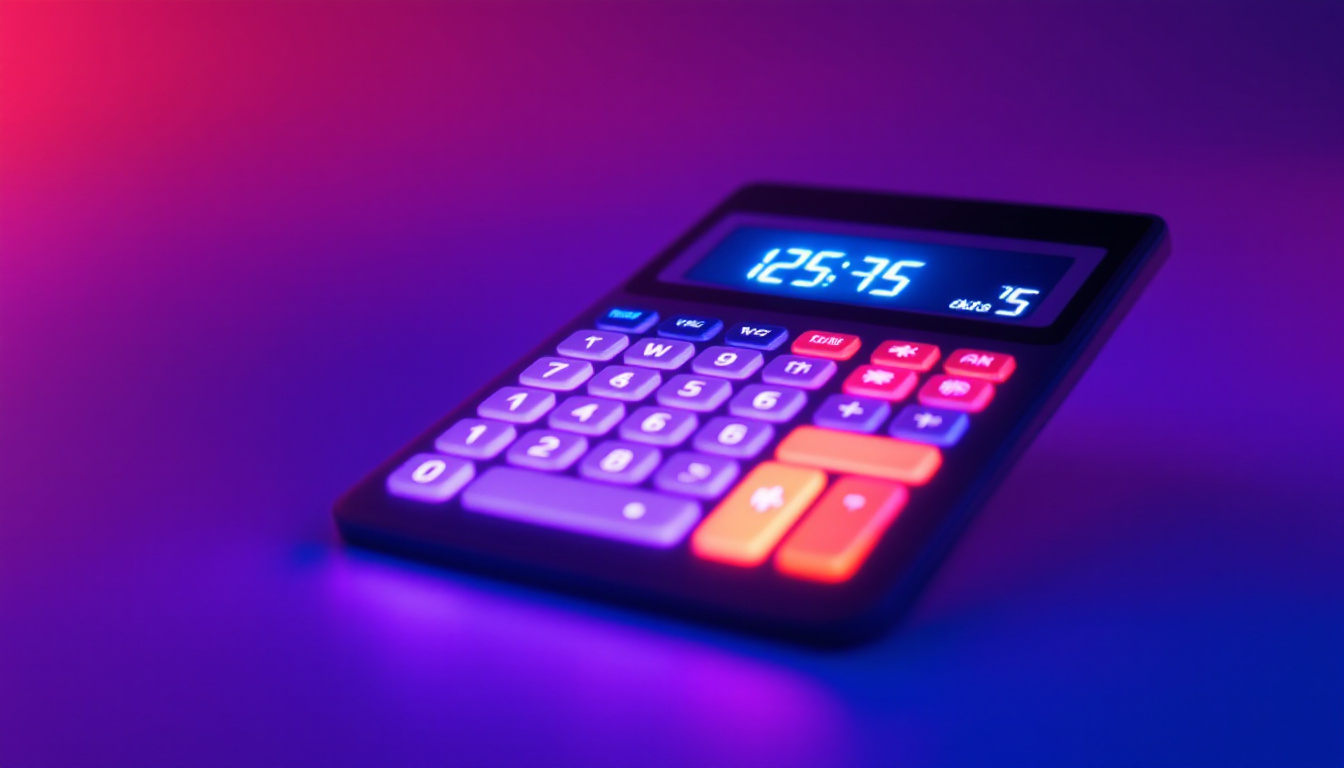In the modern world, calculators have evolved significantly from their basic mechanical forms to sophisticated electronic devices. Among the various features that enhance their functionality, the LED display stands out as a pivotal component. This article delves into the intricacies of calculators with LED screens, exploring their advantages, technology, and the impact they have on user experience.
Understanding LED Displays
Light Emitting Diodes (LEDs) are semiconductor devices that emit light when an electric current passes through them. This technology has revolutionized various electronic displays, including those found in calculators. The clarity, brightness, and efficiency of LED displays make them an ideal choice for calculators, providing users with a reliable interface for performing calculations. Beyond calculators, LED technology has permeated many aspects of daily life, from televisions to streetlights, showcasing its versatility and effectiveness in various applications.
How LED Displays Work
LED displays operate on the principle of electroluminescence. When voltage is applied to the diode, electrons recombine with holes within the device, releasing energy in the form of photons, which we perceive as light. This process allows for the creation of vibrant, clear digits on the screen, making it easier for users to read their calculations. The design of LED displays also allows for rapid response times, ensuring that users receive immediate feedback as they input data, which is essential for efficient calculation, especially in high-pressure environments like classrooms or workplaces.
In a typical calculator, the LED display consists of multiple segments that can be illuminated in various combinations to represent numbers and symbols. The most common configuration is the seven-segment display, which can show digits from 0 to 9 and some basic mathematical symbols. This simplicity and effectiveness are why LED displays are prevalent in calculators. Moreover, advancements in technology have led to the development of more complex LED displays that can show alphanumeric characters, allowing for a broader range of functionalities in more advanced calculators, such as graphing calculators, which can display equations and graphs with clarity.
Advantages of LED Displays in Calculators
LED displays offer several advantages over other types of screens, such as LCDs or older technologies. One of the most notable benefits is their brightness. LED screens are highly visible in a variety of lighting conditions, making them suitable for both indoor and outdoor use. Users can easily read the display even in bright sunlight, which is a significant advantage for students and professionals alike. This high visibility reduces eye strain, allowing users to focus on their calculations without the distraction of dim or flickering displays.
Additionally, LED displays are energy-efficient. They consume less power compared to traditional displays, which is crucial for battery-operated devices like calculators. This efficiency not only extends the battery life but also contributes to the overall sustainability of the device. Furthermore, the durability of LED technology means that these displays are less prone to damage from impacts or environmental factors, making them a long-lasting choice for educational tools and professional equipment. The combination of these advantages ensures that LED displays remain a popular choice in the design of modern calculators, enhancing user experience and reliability.
Types of LED Displays in Calculators
Calculators can feature different types of LED displays, each designed to cater to specific user needs and preferences. Understanding these variations can help users choose the right calculator for their requirements.
Single-Line vs. Multi-Line Displays
Single-line LED displays are the most common type found in basic calculators. They show one calculation at a time, making them ideal for straightforward arithmetic tasks. However, for users who require more complex calculations, multi-line displays are available. These allow users to view multiple lines of calculations simultaneously, which is particularly useful for advanced mathematical operations or programming tasks.
Multi-line displays can enhance the user experience by providing a clearer context for calculations, enabling users to track their work more effectively. This feature is especially beneficial in educational settings, where students may need to reference previous calculations while solving new problems.
Graphical LED Displays
Some advanced calculators come equipped with graphical LED displays, which can represent data visually. These displays are capable of showing graphs, charts, and other visual aids that can help users understand complex mathematical concepts more intuitively. Graphical calculators are widely used in higher education and professional fields, where visual representation of data can facilitate better decision-making.
The ability to visualize data can significantly enhance learning and comprehension, making graphical LED displays an invaluable tool for students and professionals engaged in fields such as engineering, finance, and data analysis.
Applications of LED Display Calculators
Calculators with LED displays are utilized across various sectors, from education to finance, and their applications are as diverse as the users themselves. Understanding these applications can highlight the versatility and importance of LED display technology in everyday tasks.
Educational Use
In educational settings, calculators with LED displays are essential tools for students learning mathematics and science. The clarity of the display allows for easy reading and comprehension, which is crucial during exams and assignments. Furthermore, the durability and reliability of LED technology ensure that these calculators can withstand the rigors of daily classroom use.
Teachers often recommend calculators with LED displays for their students, as they provide a straightforward interface that encourages learning. The visual clarity helps students focus on their calculations without straining their eyes, which can be particularly beneficial for younger learners.
Professional Applications
In professional environments, calculators with LED displays are indispensable for tasks that require precision and accuracy. Fields such as engineering, architecture, and finance rely heavily on calculators to perform complex calculations quickly and efficiently. The ability to view multiple lines of calculations simultaneously can save time and reduce errors, making these devices invaluable in high-pressure situations.
Moreover, the energy efficiency of LED displays is a significant advantage in professional settings where calculators are used extensively. The longer battery life ensures that professionals can rely on their devices without the constant need for recharging, allowing for uninterrupted workflow.
Choosing the Right Calculator with LED Display
When selecting a calculator with an LED display, several factors should be considered to ensure it meets the user’s needs. Understanding these factors can help individuals make informed decisions and choose the best calculator for their specific requirements.
Functionality and Features
The first consideration should be the functionality of the calculator. Basic calculators are suitable for simple arithmetic operations, while scientific and graphing calculators offer advanced features for more complex calculations. Users should assess their needs and choose a calculator that provides the necessary functions without overwhelming them with unnecessary features.
Additionally, features such as multi-line displays, programmability, and graphing capabilities can enhance the user experience. For students, a calculator that allows for easy input of equations and provides visual representations of data can be particularly beneficial.
Portability and Design
Portability is another critical factor, especially for students and professionals who need to carry their calculators daily. A lightweight, compact design can make a significant difference in usability. Furthermore, the layout of buttons and the overall design should be user-friendly, ensuring that users can navigate the device effortlessly.
Some calculators also come with protective cases or covers, which can enhance their durability and lifespan. Investing in a calculator that is built to withstand wear and tear is a wise choice for anyone who relies on their device regularly.
The Future of LED Display Calculators
The landscape of calculators is continually evolving, and LED display technology is at the forefront of this transformation. As advancements in technology continue, the future of calculators with LED displays looks promising.
Integration with Smart Technology
One of the most significant trends is the integration of calculators with smart technology. Future calculators may feature connectivity options that allow them to sync with smartphones, tablets, or computers. This integration can enable users to access additional resources, such as online tutorials or cloud-based storage for their calculations.
Moreover, smart calculators could leverage artificial intelligence to provide personalized learning experiences, adapting to the user’s level of understanding and offering tailored suggestions for improvement. This potential for customization could revolutionize how students and professionals approach problem-solving.
Enhanced User Interfaces
As technology advances, the user interfaces of calculators are likely to become more sophisticated. Touchscreen LED displays may become more common, providing users with an intuitive way to interact with their devices. This evolution could simplify navigation and enhance the overall user experience.
Additionally, the incorporation of voice recognition technology could allow users to input calculations verbally, making the process even more efficient and accessible. Such innovations could further democratize access to advanced mathematical tools, empowering users of all ages and backgrounds.
Conclusion
Calculators with LED displays have become essential tools in both educational and professional settings. Their clarity, efficiency, and versatility make them invaluable for performing calculations across various fields. As technology continues to evolve, the future of LED display calculators promises exciting advancements that will enhance user experience and accessibility.
Whether for a student tackling their first algebra problem or a professional conducting complex financial analyses, the importance of a reliable calculator cannot be overstated. Understanding the features and applications of calculators with LED displays can help users make informed choices, ensuring they have the right tools to succeed in their endeavors.
In summary, LED display technology has not only transformed calculators but has also contributed to a more efficient and effective approach to mathematics and problem-solving. As users embrace these advancements, the potential for innovation in this field remains limitless.
Discover LumenMatrix’s Advanced LED Display Solutions
As you consider the importance of LED display technology in calculators and its role in enhancing your problem-solving capabilities, why not explore the broader applications of this innovative technology? LumenMatrix, a leader in LED display solutions, offers an array of products designed to transform visual communication. From Indoor and Outdoor LED Wall Displays to specialized solutions like Vehicle and Sports LED Displays, LumenMatrix is committed to providing dynamic and engaging visual experiences. Whether for educational purposes, professional use, or brand enhancement, their cutting-edge LED display modules are tailored to meet your needs. Check out LumenMatrix LED Display Solutions today and see how they can illuminate your world with clarity and impact.































